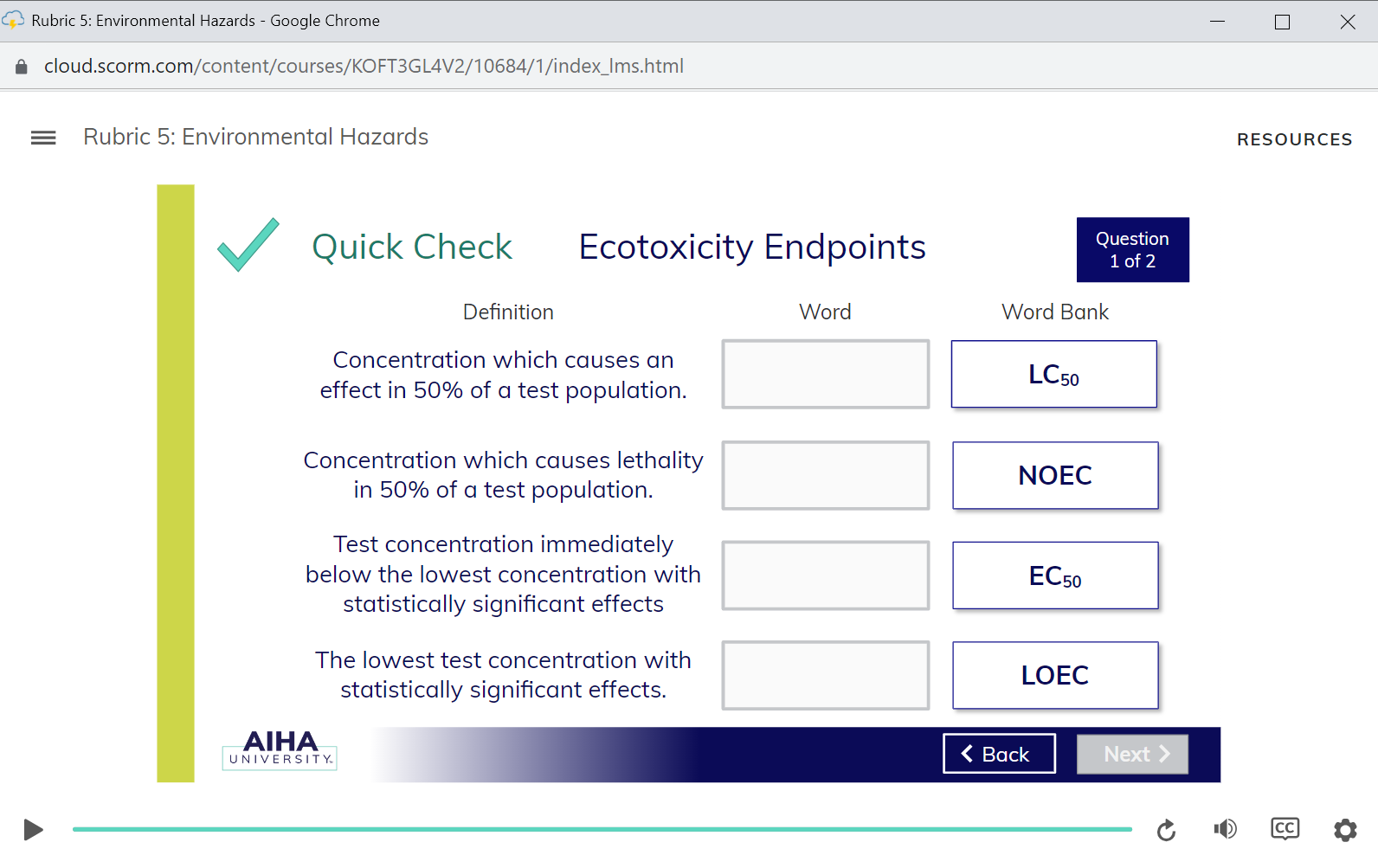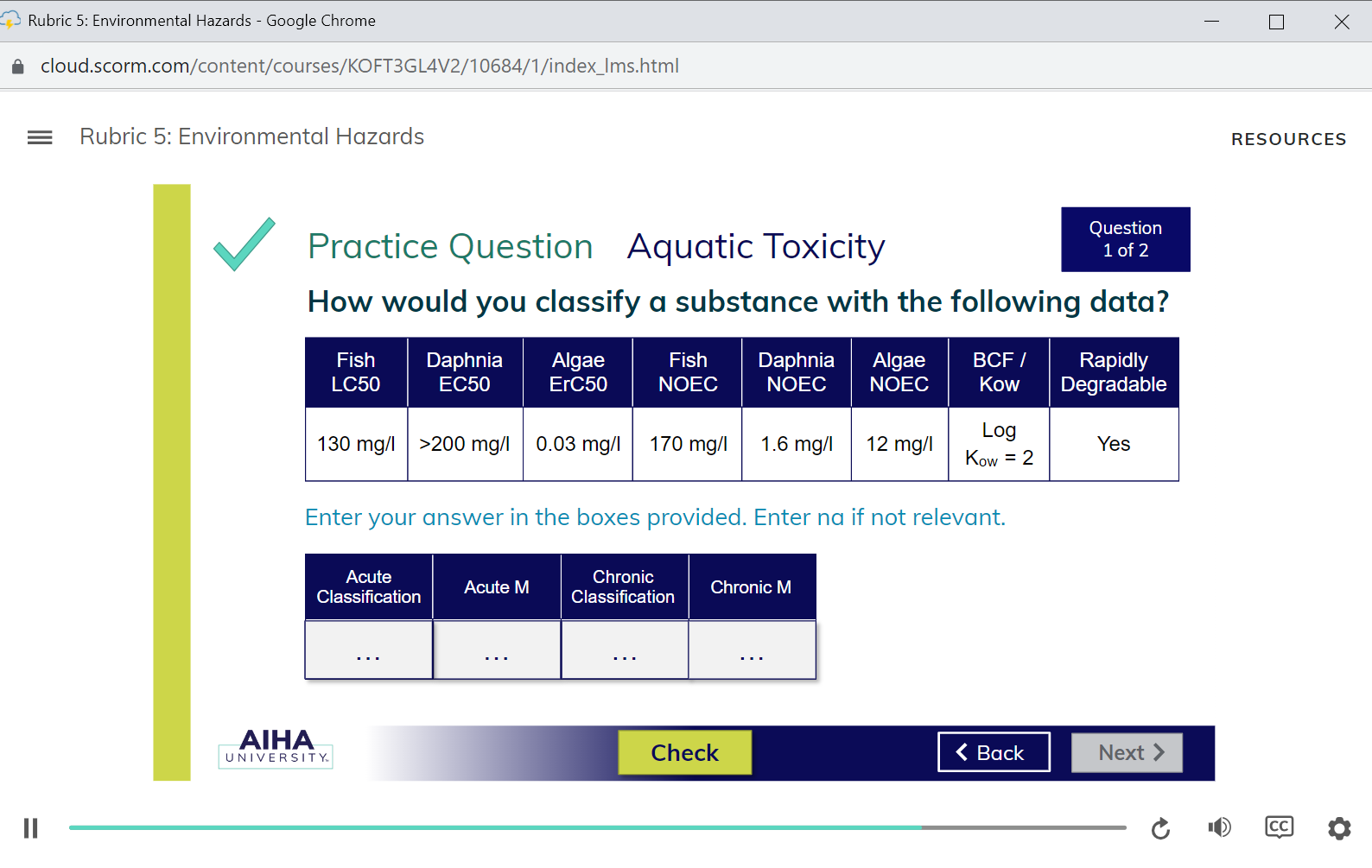Better Training, Better Safety Data Sheets
Safety data sheets (SDSs) provide critical information on a chemical's properties, hazards, and routes of exposure, as well as precautions for safe transport, storage, handling, and use. Occupational and environmental health and safety professionals can use SDSs to select personal protective equipment, develop first aid protocols, and implement effective controls.
Creating useful SDSs requires specialized knowledge and is more complicated than filling out boxes. SDS authors must understand chemicals' effects on the human body and the environment in order to correctly apply the criteria of the Globally Harmonized System of Classification and Labeling of Chemicals (GHS). For mixtures, authors must determine all components and whether they are present in high enough concentrations to be hazardous.
Yet training on SDS authorship is relatively uncommon. Denese Deeds, CIH, noted that employers rarely provide training to SDS authors and that SDS author certification isn't required in most countries. As a senior consultant at Industrial Health and Safety Consultants (IHSC) LLC, Deeds herself has encountered safety data sheets that do not accurately convey the health effects of chemicals or mixtures. "How can a person be expected to do a competent job on something that's so complicated as writing a safety data sheet with no training and without the required background and resources?" she asked.
Background on SDSs
Deeds has understood the necessity of effective hazard communication since she began consulting in the early '80s. In the Northeast, many states had passed right-to-know laws requiring companies to provide what were then called material safety data sheets (MSDSs). But industrial hygienists often had difficulty obtaining chemical hazard information from companies based in states without right-to-know laws until OSHA implemented the hazard communication standard (29 Code of Federal Regulations 1910.1200). By 1987, chemical manufacturers, distributors, and importers across all industries were required to provide MSDSs to downstream users. Then, Deeds assisted clients in writing MSDSs and developing hazard communication programs.
In 2012, OSHA aligned the hazard communication standard with Revision 3 of the GHS, replacing the MSDS with the SDS format. Creating SDS is now a primary focus of IHSC. "What we call it is chemical regulatory compliance, but we mainly write safety data sheets and labels and assist companies in complying with all the various chemical regulations," Deeds explained.
Deeds also helps train SDS authors through AIHA's online SDS and Label Authoring Course, which provides "an overview of the various skills that are necessary to be a successful SDS author," she said. Because many participants plan to take the SDS and Label Authoring Registry exam, which requires at least one year of SDS authoring experience, the course assumes that participants will have prior experience with these documents. For these professionals, Deeds said, the course is "intended to help people identify what they're good at [and] what their strengths are, but also where they have weakness, so they can do additional study."
Deeds also thinks the course benefits OEHS professionals who don't plan to take the registry exam but engage with workplaces where hazardous chemicals are used. "If they want to really understand the foundation on which our classification system is built [and] the hazard information that they're reading to help protect their workers," she said, "I think there's real value in the course for that as well."
"A well-done safety data sheet has a lot of very important information," Deeds stressed. "It really is important to understand the difference between a Category 1 carcinogen and a Category 2 carcinogen, or Specific Target Organ Toxicity. What's the difference between a single exposure and repeated exposure, and what kind of criteria are used? It's helpful, then, for people to understand that better."
Content and Structure
The SDS and Label Authoring Course is divided into rubrics covering topics related to the 16 sections of an SDS. Some rubrics outline key mathematical or chemistry knowledge, such as the mathematical formulas for classifying mixtures based on the weight percentages of their components. Others cover physical hazards, such as fire and explosions, health hazards ranging from irritation to acute toxicity to carcinogenicity, and environmental hazards, which encompass hazards to aquatic environments and the ozone layer. Deeds believes that the toxicology and environmental portions of the course are particularly useful for providing general overviews of the topics. "Because a lot of people, when they go into writing safety data sheets, focus on classification of the hazards," she said. "But in order to understand the data, you have to have knowledge of the concepts."
The course also discusses how to classify chemicals under the GHS. There have been nine revisions to the GHS since the United Nations adopted the system for standardized hazard communication in 2002, and a 10th revision is upcoming. OSHA is only now taking steps to align its hazard communication standard with Revision 7 of the GHS. Still, Deeds noted that OEHS professionals who write SDSs for use in other countries will need to comply with more recent revisions. "The course actually prepares you to be knowledgeable about even the changes [to the GHS] that are coming," she said, "not just the way things are currently in our OSHA standard."
The course's final rubric covers regulations and standards related to hazardous chemicals and hazard communication, including a very high-level overview of transport considerations. Deeds cautions, however, that regulations for transporting chemicals are too complex to be covered within the scope of the course.
For Deeds, the greatest strength of the online course is its interactive format. "In the original course, it was strictly presentation," she explained. But this just-the-facts approach didn't ensure that participants retained the information they were given or help them improve their knowledge.

The updated course addresses this by breaking up the recorded instruction with brief quizzes consisting of one or two questions each. "This allows, as you go along, to test yourself and see, by answering some questions, that you really comprehend[ed] the material," said Deeds. "And if you didn't, it's really easy, at that point, to go back and see that section again to then figure out what you missed."
This helps participants know what topics they understand completely so that they can focus more attention on areas where they can improve. They can learn at their own pace instead of the course racing ahead of them.

Outcome: More Useful SDSs
When participants finish the course, they will know everything they need to know in order to competently author an SDS. Deeds hopes these more knowledgeable SDS authors will ultimately contribute to a world where SDSs are more useful. SDSs are not only regulatory requirements—they're vital for protecting workers and consumers alike. In the pharmaceutical industry, for example, patients who receive chemotherapy drugs are one category of people exposed to hazardous substances. "But the purpose of the safety data sheet isn't for the patient," Deeds explained. "It's for the workers who are packaging this drug, people who might accidentally be exposed to it, people working in the factories where they're making it, and also people who might be involved in a spill if the packaging was damaged."
Even people who take the course without planning to be SDS authors will know how to evaluate whether the SDSs they're provided at work give good information. "You'd know enough to say, 'This is wrong' and to insist that people do a better job," Deeds said. And, she continued, both more competent SDS authors and OEHS professionals who can evaluate SDSs "end up improving the quality of hazard communication and therefore improving the protection of workers."

Comments
There are no submissions.